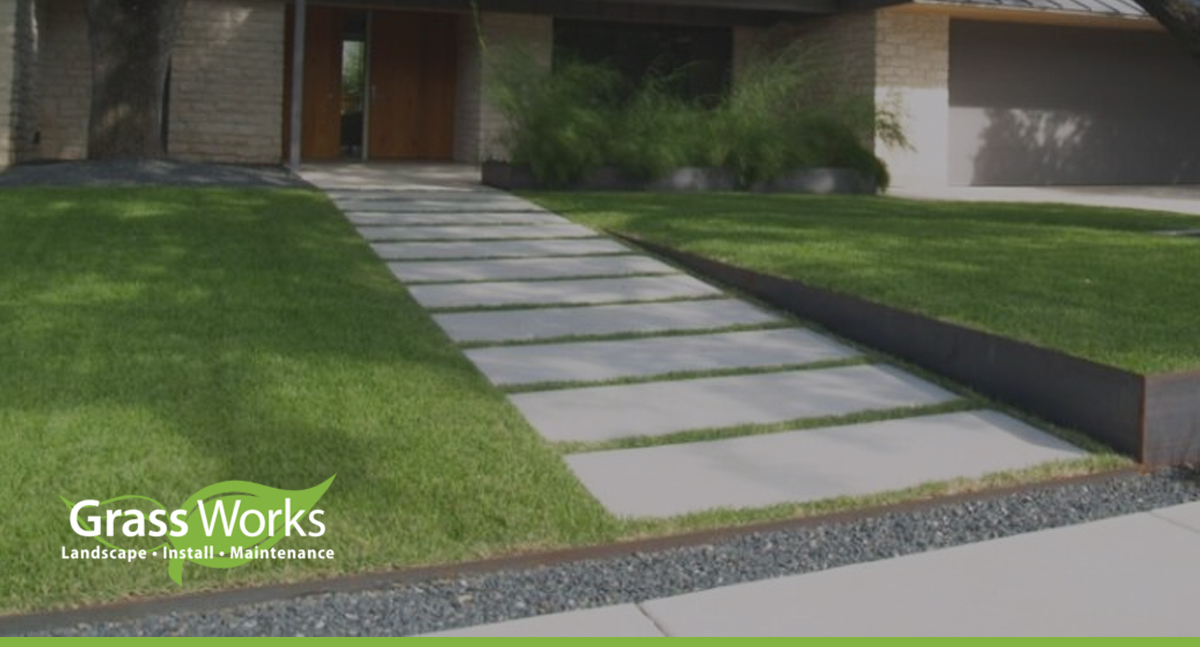Caring for New Sod: 9 Tips for Watering, Mowing, & Fertilizing Your New Sod

The first six months following your sod installation are the most important. The care techniques you’ll use will ensure your sod develops into a healthy and thriving lawn. Use this guide to create a sod care strategy that will carry you through these crucial weeks.
- Manage Your Foot Traffic
- Moisten the Soil
- Water the Sod Liberally
- Reduce Your Watering Schedule
- Avoid Mowing the Sod Too Soon
- Fertilize the New Sod
- Know the Differences in Fertilizer Types
- Monitor Root Growth
- Build Soil Mounds
1. Manage Your Foot Traffic
The pressure of foot traffic can damage the sod before it has enough time to grow its roots. During the first two weeks after you install the sod, try to avoid walking on it. You can safely resume normal foot traffic after those first 14 days.
2. Moisten the Soil
Immediately after installing new sod, you’ll need to water the lawn. Use enough water to completely wet the soil to a depth of six inches. Step on the sod to make sure it feels soggy underfoot. Don’t worry about overwatering new sod — that’s almost impossible. The excess water helps create a bond between the sod and the soil.
3. Water the Sod Liberally
It’s important to keep the soil moist over the first two weeks. Check the soil every few hours to make sure it still feels soggy. You can also lift a corner of the sod to ensure the underlying soil feels wet. In general, water the sod up to four times per day. You may be able to water it less frequently on rainy days.
4. Reduce Your Watering Schedule
After the first two weeks, you can water the sod less frequently. A longer watering session once per day should be enough to keep the soil moist but less saturated. This practice will promote faster and stronger root growth over the next six months.
5. Avoid Mowing the Sod Too Soon
It’s crucial to avoid mowing the sod for the first two weeks. You’ll want to give it time to grow roots and form a permanent bond with the soil. After two weeks, you can mow the sod. Avoid cutting the grass too low. Use a sharp blade and only cut ⅓ of the grass length. Cutting the grass too low could result in damaging the grass stems.
6. Fertilize the New Sod
After five weeks, your sod is ready for fertilization. Look for a good starter fertilizer. This type of fertilizer should have a higher phosphorus count to promote root growth. A high amount of potassium will lead to stronger grass with more stress tolerance.
To obtain these benefits, look for an NPK (nitrogen/phosphorus, potassium) fertilizer. Choose an NPK product with a 10-20-10 or 12-24-12 ratio.
7. Know the Differences in Fertilizer Types
There are three main types of fertilizer that will benefit your sod. Knowing the traits of each type will help you pick the best product for your needs.
Liquid Fertilizer
Experts usually recommend liquid fertilizer for faster results. These products are stronger to ensure rapid growth, so make sure you don’t overuse them. Follow the manufacturer’s instructions carefully.
Granular Fertilizer
This product comes in pellet-like pieces, which control the delivery of nutrients as the soil absorbs them. This provides a time-release method that’s beneficial for new sod.
Organic Fertilizer
This is the mildest of the three types, making it a gentler fertilizer for new sod. It delivers the nutrients the soil needs to promote healthy growth. Since the organic fertilizer has a gentle effect, you should expect a slower rate of growth.
8. Monitor Root Growth
While most roots grow enough to form a bond with the soil in two weeks, that’s not always the case. You can ensure your sod is growing good roots by regularly checking. Lift a corner of the sod to check for roots. New roots look white, so a larger number of white roots will indicate continued growth.
9. Build Soil Mounds
After installing new sod, build mounds of soil around the outer edges of the lawn. The mounds will prevent erosion as you water and fertilize the sod. This is helpful in promoting a faster and stronger bond between the soil and the sod.
Watch for the Early Signs of a Problem
In addition to following these tips, your sod care strategy should include careful monitoring. Keep an eye out for changes in the appearance of your lawn.
If you see discolored grass, bald spots, or other issues, consult your landscaping company immediately. They can help you adjust your lawn care practices to treat the problem effectively.
Looking to enhance your residential or commercial property with a fresh lawn/sod installation? Contact Grass Works Lawn Care today to learn more about our sod delivery & installation options.

Ferris MyCue is the founder and owner of Grass Works Lawn Care, LLC located in Leander, TX. As a former firefighter who maintained yards on his days off, he saw a need for a dependable, local maintenance company that knew the hill country climate and could deliver quality landscaping services for a reasonable price. Since 2007 he has used his leadership to grow the company into one of the top landscape maintenance companies in Austin and surrounding areas offering landscape maintenance, design, and irrigation services to both residential and commercial clients. Ferris is also a member of the Seasonal Employment Alliance (SEA) and an active participant in advocacy efforts to help promote cap relief.